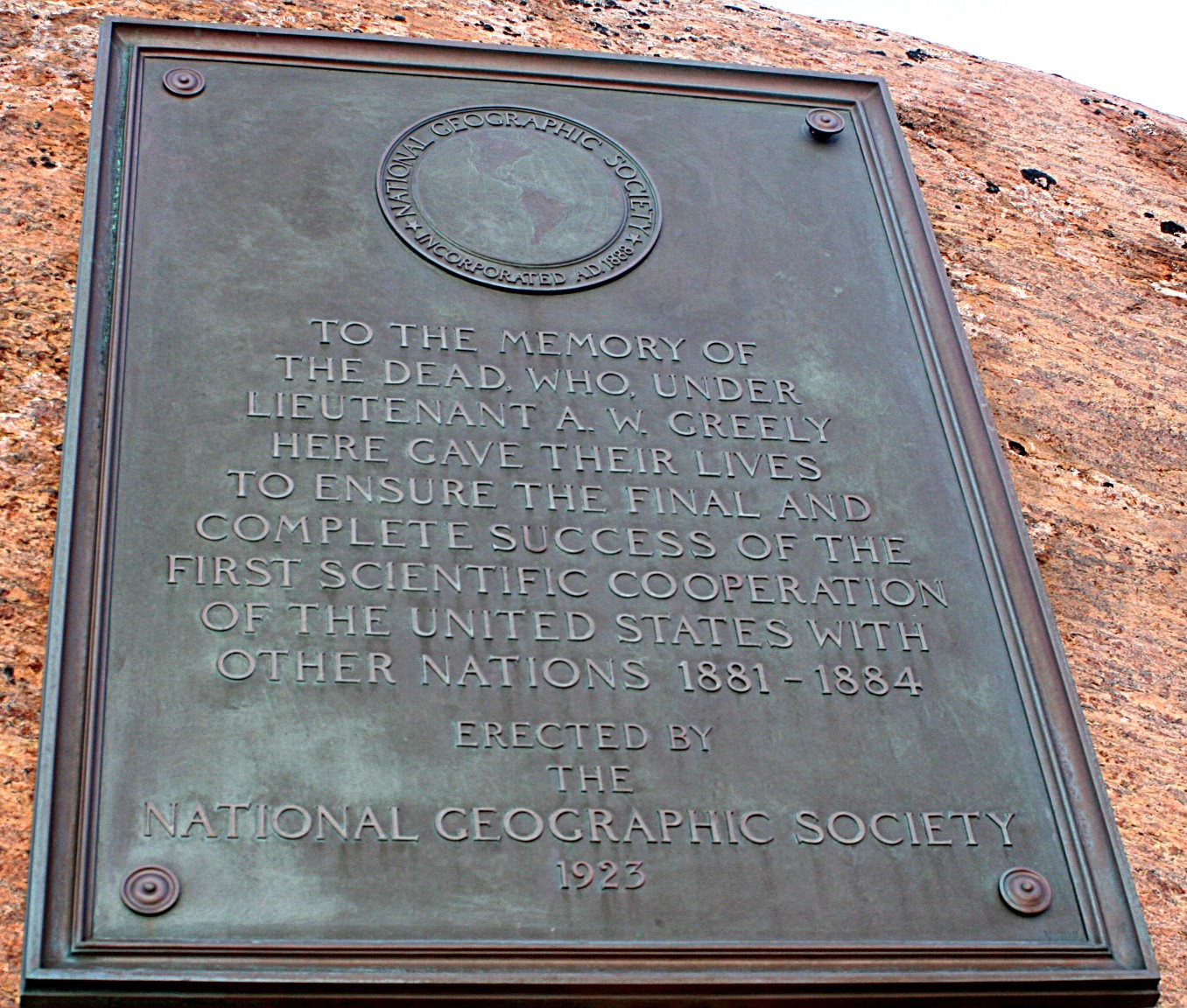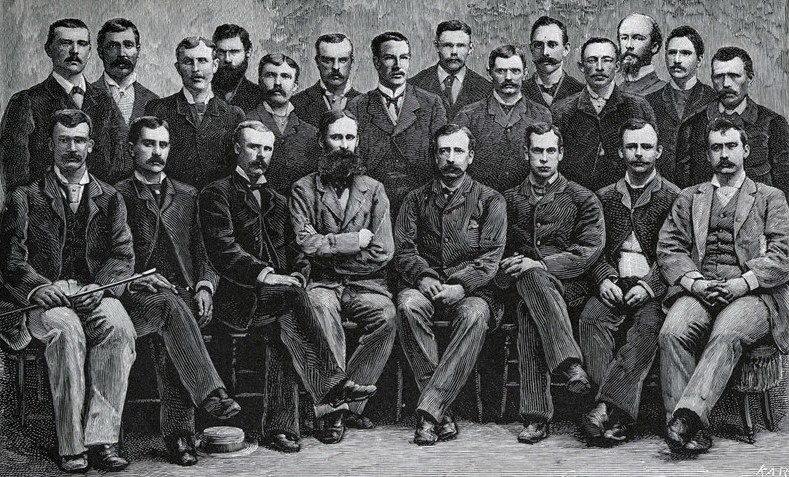|
Cape Sabine
Cape Sabine is a land point on Pim Island, off the eastern shores of the Johan Peninsula, Ellesmere Island, in the Smith Sound, Qikiqtaaluk Region, Nunavut, Canada. History The cape was named after Arctic explorer Sir Edward Sabine (1788–1883), was the site of the winter camp of Adolphus Greely and the Lady Franklin Bay Expedition in 1883–1884. Notable people *Edward Israel Edward Israel (July 1, 1859 – May 27, 1884) was an astronomer and Polar explorer. Early years Israel was born in Kalamazoo, Michigan on July 1, 1859. He was the son of Mannes and Tillie Israel, the first Jews to settle in Kalamazoo. After gra ... References External links2004 Recreation of Expedition Peninsulas of Qikiqtaaluk Region {{QikiqtaalukNU-geo-stub ... [...More Info...] [...Related Items...] OR: [Wikipedia] [Google] [Baidu] |
Pim Island
Pim Island (previously Bedford Pim Island) is located off the eastern coast of Ellesmere Island, part of the Qikiqtaaluk Region of the Canadian territory of Nunavut. Located within the Arctic Archipelago, it is a part of the Queen Elizabeth Islands. Pim Island is separated from Ellesmere Island by Rice Strait, the waterway that connects Rosse Bay to the south and Buchanan Bay to the north. Nares Strait is to the east. Pim Island is from Cocked Hat Island. History The Adolphus Greely expedition wintered at Camp Clay in 1883, and in 1884, Cape Sabine was the rescue site for Greely and the Lady Franklin Bay Expedition. The island is named in honour of naval officer and barrister Bedford Pim of . References External links Pim Islandin the Atlas of Canada The Atlas of Canada (french: L'Atlas du Canada) is an online atlas published by Natural Resources Canada that has information on every city, town, village, and hamlet in Canada. It was originally a print atlas, with ... [...More Info...] [...Related Items...] OR: [Wikipedia] [Google] [Baidu] |
Qikiqtaaluk Region
The Qikiqtaaluk Region, Qikiqtani Region (Inuktitut syllabics: ᕿᑭᖅᑖᓗᒃ ) or Baffin Region is the easternmost, northernmost, and southernmost administrative region of Nunavut, Canada. Qikiqtaaluk is the traditional Inuktitut name for Baffin Island. Although the Qikiqtaaluk Region is the most commonly used name in official contexts, several notable public organizations, including Statistics Canada prefer the older term Baffin Region. With a population of 18,988 and an area of , it is the largest and most populated of the three regions. The region consists of Baffin Island, the Belcher Islands, Akimiski Island, Mansel Island, Prince Charles Island, Bylot Island, Devon Island, Baillie-Hamilton Island, Cornwallis Island, Bathurst Island, Amund Ringnes Island, Ellef Ringnes Island, Axel Heiberg Island, Ellesmere Island, the Melville Peninsula, the eastern part of Melville Island, and the northern parts of both Prince of Wales Island and Somerset Island, plus ... [...More Info...] [...Related Items...] OR: [Wikipedia] [Google] [Baidu] |
Nunavut
Nunavut ( , ; iu, ᓄᓇᕗᑦ , ; ) is the largest and northernmost territory of Canada. It was separated officially from the Northwest Territories on April 1, 1999, via the '' Nunavut Act'' and the '' Nunavut Land Claims Agreement Act'', which provided this territory to the Inuit for independent government. The boundaries had been drawn in 1993. The creation of Nunavut resulted in the first major change to Canada's political map in half a century since the province of Newfoundland was admitted in 1949. Nunavut comprises a major portion of Northern Canada and most of the Arctic Archipelago. Its vast territory makes it the fifth-largest country subdivision in the world, as well as North America's second-largest (after Greenland). The capital Iqaluit (formerly Frobisher Bay), on Baffin Island in the east, was chosen by a capital plebiscite in 1995. Other major communities include the regional centres of Rankin Inlet and Cambridge Bay. Nunavut also includes Ellesme ... [...More Info...] [...Related Items...] OR: [Wikipedia] [Google] [Baidu] |
Smith Sound
Smith Sound ( da, Smith Sund; french: Détroit de Smith) is an uninhabited Arctic sea passage between Greenland and Canada's northernmost island, Ellesmere Island. It links Baffin Bay with Kane Basin and forms part of the Nares Strait. On the Greenland side of the sound were the now abandoned settlements of Etah and Annoatok. History The first known visit to the area by Europeans was in 1616 when the ''Discovery'', captained by Robert Bylot and piloted by William Baffin, sailed into this region. The sound was originally named ''Sir Thomas Smith's Bay'' after the English diplomat Sir Thomas Smythe. By the 1750s it regularly appeared on maps as ''Sir Thomas Smith's Sound'', though no further exploration of the area would be recorded until John Ross' 1818 expedition. By this time it had begun to be known simply as ''Smith Sound''. In 1852 Edward Augustus Inglefield penetrated a little further than Baffin, establishing a new furthest north in North America. References F ... [...More Info...] [...Related Items...] OR: [Wikipedia] [Google] [Baidu] |
Arctic
The Arctic ( or ) is a polar region located at the northernmost part of Earth. The Arctic consists of the Arctic Ocean, adjacent seas, and parts of Canada (Yukon, Northwest Territories, Nunavut), Danish Realm (Greenland), Finland, Iceland, Norway, Russia ( Murmansk, Siberia, Nenets Okrug, Novaya Zemlya), Sweden and the United States (Alaska). Land within the Arctic region has seasonally varying snow and ice cover, with predominantly treeless permafrost (permanently frozen underground ice) containing tundra. Arctic seas contain seasonal sea ice in many places. The Arctic region is a unique area among Earth's ecosystems. The cultures in the region and the Arctic indigenous peoples have adapted to its cold and extreme conditions. Life in the Arctic includes zooplankton and phytoplankton, fish and marine mammals, birds, land animals, plants and human societies. Arctic land is bordered by the subarctic. Definition and etymology The word Arctic comes from the Greek word ( ... [...More Info...] [...Related Items...] OR: [Wikipedia] [Google] [Baidu] |
Ellesmere Island
Ellesmere Island ( iu, script=Latn, Umingmak Nuna, lit=land of muskoxen; french: île d'Ellesmere) is Canada's northernmost and third largest island, and the tenth largest in the world. It comprises an area of , slightly smaller than Great Britain, and the total length of the island is . Lying within the Arctic Archipelago, Ellesmere Island is considered part of the Queen Elizabeth Islands. Cape Columbia at 83°06′ is the northernmost point of land in Canada and one of the northernmost points of land on the planet (the northernmost point of land on Earth is the nearby Kaffeklubben Island of Greenland). The Arctic Cordillera mountain system covers much of Ellesmere Island, making it the most mountainous in the Arctic Archipelago. More than one-fifth of the island is protected as Quttinirpaaq National Park. In 2021, the population of Ellesmere Island was recorded at 144. There are three settlements: Alert, Eureka, and Grise Fiord. Ellesmere Island is administered a ... [...More Info...] [...Related Items...] OR: [Wikipedia] [Google] [Baidu] |
Arctic Exploration
Arctic exploration is the physical exploration of the Arctic region of the Earth. It refers to the historical period during which mankind has explored the region north of the Arctic Circle. Historical records suggest that humankind have explored the northern extremes since 325 BC, when the ancient Greek sailor Pytheas reached a frozen sea while attempting to find a source of the metal tin. Dangerous oceans and poor weather conditions often fetter explorers attempting to reach polar regions and journeying through these perils by sight, boat, and foot has proven difficult. Ancient history Indo-European Hypothesis A controversial hypothesis, often regarded as pseudohistory, sets the home of the mythical people Hyperboreans in the Arctic. The scientist and author John G. Bennett talked about it in his research paper "The Hyperborean Origin of the Indo-European Culture" (1963). The theory was originally put forth by William F. Warren, the first President of Boston University, in h ... [...More Info...] [...Related Items...] OR: [Wikipedia] [Google] [Baidu] |
Edward Sabine
Sir Edward Sabine ( ; 14 October 1788 – 26 June 1883) was an Irish astronomer, geophysicist, ornithologist, explorer, soldier and the 30th president of the Royal Society. He led the effort to establish a system of magnetic observatories in various parts of British territory all over the globe. Much of his life was devoted to their direction, and to analyzing their observations. Other research focused on the birds of Greenland, ocean temperatures, the Gulf Stream, barometric measurement of heights, arc of the meridian, glacial transport of rocks, the volcanoes of the Hawaiian Islands, and various points of meteorology. Early life Edward Sabine was born in Dublin to Joseph Sabine, a member of a prominent Anglo-Irish family who was visiting his Irish relatives at the time of his son's birth. The family connections with Ireland can be traced back to the 17th century. His mother, Sarah Hunt, died when he was just one month old. He was the couple's fifth son and ninth chil ... [...More Info...] [...Related Items...] OR: [Wikipedia] [Google] [Baidu] |
Adolphus Greely
Adolphus Washington Greely (March 27, 1844 – October 20, 1935) was a United States Army officer and polar explorer. He attained the rank of major general and was a recipient of the Medal of Honor. A native of Newburyport, Massachusetts and an 1860 graduate of Brown High School (now Newburyport High School), in 1861 he enlisted in the Union Army for the American Civil War. He received his commission as a second lieutenant in 1863 and was promoted to first lieutenant in 1864 and captain in 1865. At the end of the war he received a brevet promotion to major in recognition of his wartime accomplishments. After the war, Greely accepted a second lieutenant's commission in the regular army. In 1881, he was appointed to command the Lady Franklin Bay Expedition, a 25-man expedition organized to carry out Arctic explorations. The expedition ran short of food and several resupply and rescue missions were unsuccessful, and by the time Greely and his men were rescued in 1884, there ... [...More Info...] [...Related Items...] OR: [Wikipedia] [Google] [Baidu] |
Lady Franklin Bay Expedition
* The Lady Franklin Bay Expedition of 1881–1884 to Lady Franklin Bay on Ellesmere Island in the Canadian Arctic was led by Lieutenant Adolphus Greely, and was promoted by the United States Army Signal Corps. Its purpose was to establish a meteorological-observation station as part of the First International Polar Year, and to collect astronomical and magnetic data. During the expedition, two members of the crew reached a new Farthest North record, but of the original twenty-five men, only seven survived to return. The expedition was under the auspices of the Signal Corps at a time when the Corps' Chief Disbursements officer, Henry W. Howgate, was arrested for embezzlement. However, that did not deter the planning and execution of the voyage. Expedition First year, 1881 The Lady Franklin Bay Expedition was led by Lieutenant Adolphus W. Greely of the Fifth United States Cavalry, with astronomer Edward Israel and photographer George W. Rice among the crew of twenty-one o ... [...More Info...] [...Related Items...] OR: [Wikipedia] [Google] [Baidu] |
Edward Israel
Edward Israel (July 1, 1859 – May 27, 1884) was an astronomer and Polar explorer. Early years Israel was born in Kalamazoo, Michigan on July 1, 1859. He was the son of Mannes and Tillie Israel, the first Jews to settle in Kalamazoo. After graduating from the Kalamazoo Public School System, Israel went to the University of Michigan, where he studied astronomy. Just before his graduation in 1881, one of Israel's professors nominated him to serve as the astronomer on an official US expedition to the Arctic. After graduation, Israel briefly returned to Kalamazoo to visit his family. Polar expedition Israel left for Washington, D.C., on April 28, 1881, to join the Lady Franklin Bay Polar Expedition with 23 other men under the leadership of Adolphus Greely. The Lady Franklin Bay Expedition was commissioned by the US government to collect scientific information about the polar regions. Israel received the assignment of collecting astronomical, magnetic and meteorological data. T ... [...More Info...] [...Related Items...] OR: [Wikipedia] [Google] [Baidu] |





